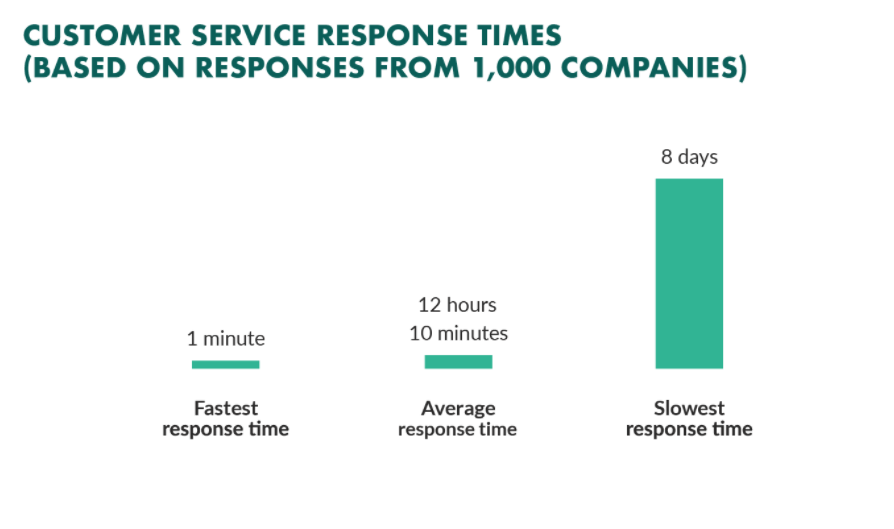By Jessica Day
With companies being more digitally equipped and competitive, providing access to multiple support channels has become necessary to address the current market consumer’s expectations and demands. Most companies that have recently undergone digitalization as a response to the pandemic can be more guided in providing customer service across communication channels to create viable results.
Omni-channel Customer Service and its Benefits
Omni-channel customer service allows users to contact a company through their communication medium of choice (such as SMS, social media, email, free live chat on website or others) and always get satisfactory results. In 2018, omni-channel shoppers made up 73% of all consumers – and with that number on the rise, it’s more important than ever to focus on omni-channel customer service.
That same year, a different study found that an excellent omni-channel engagement strategy helped retain 89% of a brand’s consumers. Providing the best quality omni-channel customer service is therefore essential to both draw in and keep the vast majority of potential customers. That’s why it’s absolutely crucial to maximize on customer experience competencies wherever possible.
9 Best Practices for Omni-channel Customer Service
Set and Monitor Metrics
The first step in providing top-quality service to customers is ensuring that the teams providing that service are working as effectively as possible. Or, in other words, focusing on WFO (workforce optimization).
Working closely with a WFO contact center is a great strategy to accomplish this. Customer service team managers should keep track of their team members’ performances, and take advantage of the WFO features available to help unlock their team’s full potential.

Similarly, it’s vital to gather data on how customers are responding to the current support tactics in place to help them. Keeping a close eye on the customer journey is necessary to ensure that it’s always as smooth as possible, and lets places be identified where improvement is needed. Customers’ responses to the services they’re provided with should, therefore, always inform future strategies.
Provide Mobile Services
Many different types of customers expect to be able to access a brand’s content on mobile devices. Around 56% of customers use mobile devices at home to research products, and 34% do the same while already in store.
Mobile devices are used for many things, including making purchases and, as mentioned, checking out potential products. The future of mobile looks to involve these devices becoming even more popular than they already are, highlighting the importance of adapting to this trend.
Customers have come to expect a seamless brand experience across all platforms – as many as 60% of millennial customers look for companies that can deliver quality service even on mobile devices. One example of a way to do this is by providing the option for SMS-based customer service. That lets consumers message brand representatives directly via their mobile devices. This helps humanize the face of the brand, while also making it easier for mobile-based customers to connect with the company.
Improve Response Time
Despite the fact that 88% of customers expect a response within 60 minutes of initiating contact, some companies can take up to eight days to deliver that response.

When customers have to wait this long to resolve any issues they encounter, they’re likely to become frustrated and more inclined to walk away from a transaction. To avoid this, it’s crucial to shorten your company’s response time as much as possible.
Chat in Real Time
Real-time chatting is a great way to address the issue of response times. Instant messaging lets a company’s representatives resolve queries immediately, without customers needing to wait in a queue or for an email response.
Face-to-face calls, which become possible when companies opt to use a call center phone systems with the best conversation analytics supporting them, can also serve this end. They’re just as immediate, and they let customers see the people who are helping them directly.
Customer Training
It’s not just the company’s support team that needs to be well-trained in problem resolution. Customers often want to resolve issues by themselves through resources like in-depth FAQs or similar tools.
A detailed look at a business’ ecommerce analytics statistics can help to reveal which questions are the most frequently asked, as well as which processes are suitable for a customer to carry out without help.
Understand Customer Behavior
If your customers generally seem to prefer for you to send online fax messages to communicate with them, then it’s important to adapt to that pattern. Customer behavior in general is important to analyze closely, since it affects the way companies provide their consumers with necessary support.
In the above example, customers that prefer communicating via fax would push a business to always suggest this as an option. Likewise, when customer behavior patterns show that most shoppers prefer using mobile devices, companies must adapt accordingly.

Continuous Support Training
The support team should constantly be undergoing new training, potentially online, in order to provide the best service possible in the age of digital transformation. By ensuring that they have access to new and innovative tools to supplement their virtual training, businesses can help their support teams to develop their competencies and help customers more efficiently.
Utilize Email Automation Workflows
While it’s important to continually humanize the face of a brand, email is one department in which automated customer service can be hugely helpful. Having automated responses ready for common, easy-to-resolve queries makes customer service teams more efficient, while still helping customers feel personally addressed.
Keep Track
As the statistics show, creating a seamless, streamlined customer service process means providing a service that most consumers actively seek out. That’s why all channels of customer support need to be integrated, so all concerns can be tracked across the various platforms. This helps make sure customers never have to repeat themselves, and won’t be asked to waste their time explaining the same issue over and over.
Conclusion
Putting the customer first means providing all the support the company can offer, and omni-channel customer service is necessary to both do this and to stay competitive. By following these nine practices, you can ensure your customer service team delivers the best possible experience to consumers.

About the Author
 Jessica Day is the Senior Director for Marketing Strategy at Dialpad, a modern business communications platform with contact center IVR and toll-free number services that takes every kind of conversation to the next level—turning conversations into opportunities. Jessica is an expert in collaborating with multifunctional teams to execute and optimize marketing efforts, for both company and client campaigns. Here is her LinkedIn.
Jessica Day is the Senior Director for Marketing Strategy at Dialpad, a modern business communications platform with contact center IVR and toll-free number services that takes every kind of conversation to the next level—turning conversations into opportunities. Jessica is an expert in collaborating with multifunctional teams to execute and optimize marketing efforts, for both company and client campaigns. Here is her LinkedIn.



































